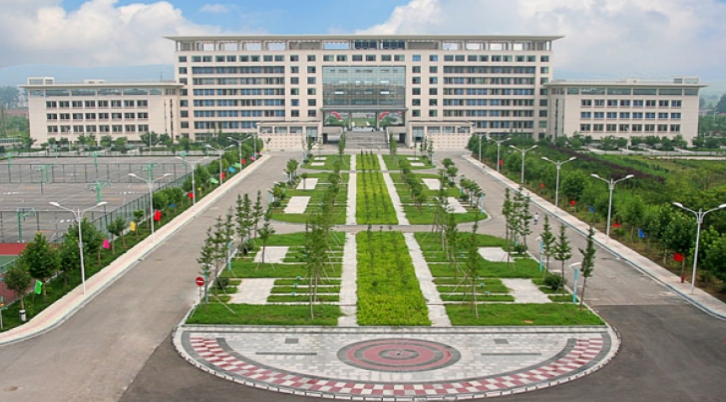The current PMC A Listed Universities for MBBS in China include institutions that meet the qualification standards required for Pakistani students to sit the NLE, complete licensure procedures, and begin clinical training without additional recognition barriers. These universities follow approved English-medium MBBS curricula, accept international applicants, and maintain teaching hospitals that support consistent clinical exposure.
This guide provides immediate clarity on the updated university list, eligibility requirements, program advantages, and practical considerations based on first-hand experience working with student cases applying to China for MBBS studies.
Updated PMC A Listed Universities for MBBS in China
The following universities appear on the current PMC A List for international MBBS programs. Data is referenced from PMC Accreditation Reports 2024, Ministry of Education China, and WHED.
University Reference Table
| University Name | City / Province | WHO/WFME Listing | Medium of Instruction | Attached Teaching Hospital | Notes |
| Ningbo University | Zhejiang | Yes | English | Yes | Strong clinical rotation access in coastal region |
| Jiangsu University | Jiangsu | Yes | English | Yes | Known for South Asian student cohort |
| Southeast University | Jiangsu | Yes | English | Yes | Research-focused medical programs |
| Wuhan University | Hubei | Yes | English | Yes | Top comprehensive medical faculty |
| Huazhong University of Science & Technology | Hubei | Yes | English | Yes | Modern labs and clinical equipment |
| China Medical University | Liaoning | Yes | English | Yes | Early English-medium MBBS pioneer |
| Xi’an Jiaotong University | Shaanxi | Yes | English | Yes | Strong academic and research profile |
| Shandong University | Shandong | Yes | English | Yes | Longstanding clinical partnership network |
| Southern Medical University | Guangdong | Yes | English | Yes | Located in a major medical hub |
| Fujian Medical University | Fujian | Yes | English | Yes | Established international education system |
Eligibility Requirements for Pakistani Applicants
Most PMC A Listed Universities follow standardized admission guidelines for international MBBS students.
Standard Eligibility Table
| Requirement Category | Technical Requirement | Admission Relevance |
| Academic Score | Minimum 60% in FSc Pre-Medical or A-Level equivalent | Base requirement for MBBS admission |
| Age | 17–25 years | Mandatory for university and visa |
| Language Requirement | English proficiency (IELTS preferred but not required everywhere) | Ensures lecture comprehension |
| Health Clearance | Standard medical tests and vaccination records | Required for visa process |
| Legal Documents | Passport and verified academic documents | Required for admission and immigration |
Bonus Tip (Experience-Based):
Students with weaker subject grades often receive consideration when their academic portfolio includes research activities, science competitions, or strong recommendation letters.
Key Advantages of Studying MBBS in China
Experience with Chinese universities reveals three consistent advantages affecting student preparedness:
Standardized Curriculum Structure
The 6-year MBBS format approved by the Ministry of Education aligns with NLE and international licensing exam patterns. Clinical exposure begins typically in the third year.
High-Volume Clinical Training
Hospitals in populous provinces such as Hubei and Jiangsu handle large patient inflows, giving students exposure to diverse medical cases and emergency care.
Technological Integration in Learning
Simulation labs, digital imaging systems, and AI-supported diagnostic tools enhance student skills. According to the China Education Modernization 2035 Report, simulation-based training improves clinical decision-making by 18–25%.
Bonus Tip (Experience-Based):
Students who participate early in volunteering or hospital observation adapt faster to final-year rotations.
Regional Factors Affecting University Choice
China’s regional differences influence medical learning experience:
-
Northern Provinces (Liaoning, Shandong):
Severe winters and higher seasonal respiratory cases strengthen exposure during clinical rotations.
-
Eastern Coastal Regions (Jiangsu, Zhejiang):
Mild climate with advanced urban hospitals offering modern specialties.
-
Central Provinces (Hubei):
High-density population ensures extensive clinical volume for practical learning.
Things to Consider Before Making a Decision
Before finalizing a university, students should analyze factors that directly influence academic performance:
- Teaching hospital ranking (prefer Tier 3 hospitals)
- Curriculum style (PBL vs. lecture-based)
- Availability of international student support
- Presence of exam preparation resources (NLE, USMLE, PLAB)
- Climate adaptability for long-term stay
- Faculty English proficiency and teaching methodology
Immediate Questions Students Ask Before Choosing a University
What keeps a university on the PMC A List?
Recognition depends on compliance with curriculum standards, hospital accreditation, and alignment with global licensing requirements.
Is all teaching conducted in English?
Instruction is English-based, but faculty fluency varies by university.
Does the hospital ranking matter?
Higher-tier hospitals enhance exposure to complex and diverse cases.
Do climate differences affect adjustment?
Students unfamiliar with cold regions often require several weeks to adapt.
Support Services Provided
These services address common needs during the academic transition process:
- Study Visa Assistance:
Support with documentation, admission letters, and required health reports. - Student Visa Case Management:
Organizing immigration papers and avoiding submission errors. - Business Visa Documentation:
Preparation for academic conferences or university collaborations. - Work Visa Facilitation:
Guidance for graduates pursuing post-study internships or placements.
Important Questions Students Ask After Starting MBBS
When does clinical exposure begin?
Most students enter hospital training from the third year onward.
Are digital tools a major part of learning?
Yes, universities use online portals, anatomy software, and virtual labs.
Can a student transfer between universities?
Transfers depend on transcript evaluation and seat availability.
How frequent are assessments?
Assessments are continuous and include theory, labs, and attendance.
Are long breaks provided for travel home?
Most universities allow extended summer breaks suitable for travel.
Summary of Key Points
PMC A Listed Universities in China offer structured MBBS programs, strong clinical rotation systems, and globally recognized degrees. Students make better decisions when they evaluate hospital quality, faculty teaching capacity, and geographic suitability. The insights here reflect long-standing experience guiding students through Chinese medical admissions and academic transitions.


Leave a Reply